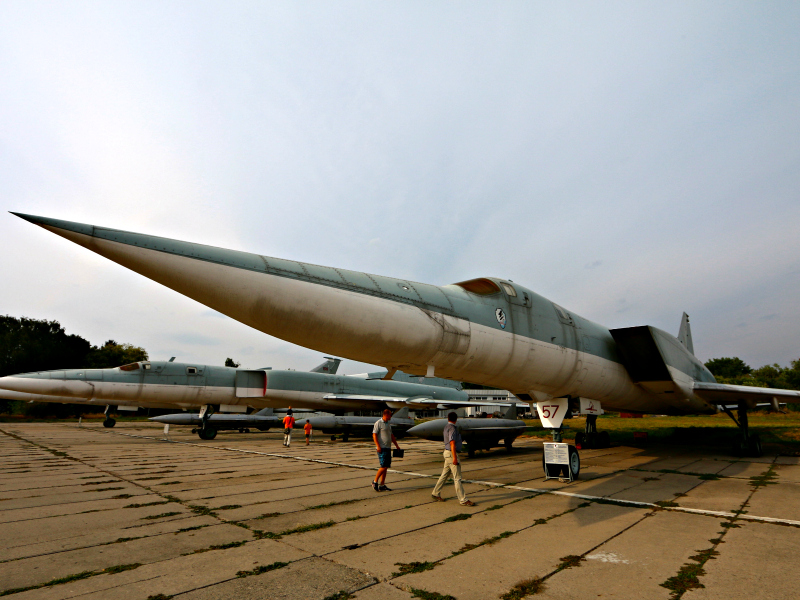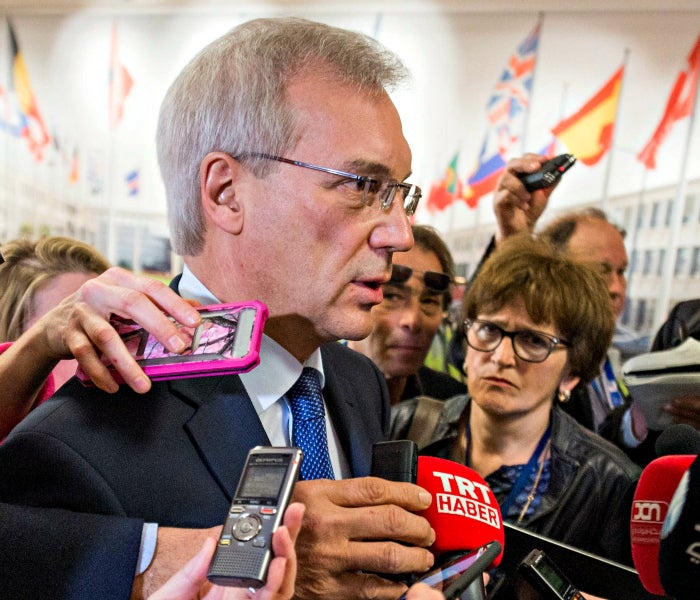“Is Iran’s Supreme Leader Ayatollah Ali Khamenei a graduate of the Patrice Lumumba People’s Friendship University in Moscow? Did the KGB recruit Khamenei as a spy in the 1960’s? Is Soviet indoctrination and ideological training to blame for Khamenei’s hatred of the United States? The Persian blogosphere is boiling over with speculations about Khamenei’s alleged Soviet connections. The affair started Wednesday, as Iranian bloggers discovered Russia Today’s February 5, 2010 report on the 50th anniversary of the People’s Friendship University in Moscow, in which Khamenei is mentioned among the university’s “most notable graduates.” A claim also appears on Russia Today’s website, although the reference is made to “Iran’s Supreme Leader Ali Khomeini,” an obvious mistake. Subsequently, Iranian bloggers identified other Russian sources making the very same claim: The November 25, 2003 issue of Kommersant presents Khamenei as a People’s Friendship University graduate…………….”
Patrice Lumumba University was named after the murdered first Congolese prime minister after independence from Belgium. Lumumba was allegedly killed by Congolese rivals and Western intelligence services. I believe that to be true: Lumumba was perceived as a ‘communist’ by the West during the peak of the Cold War. The Soviet university attracted many third world students, and it is possible that a young Khamenei was among them, but it is highly unlikely. I doubt it very much: he must have started as a student of Islamic faith at a young age. Or maybe he was groomed as a communist mole inside Qom, a potential Manchurian Ayatollah. If true this would mean that Khamenei also speaks Russian in addition to Persian, Arabic, and Turkish. He is as much a communist as the Saudi Mufti is a secret Shi’a, as much as Bashar al-Assad is a Salafi.
For close to a century, destiny has played a bitter game with our ancient homeland. The winds of bizarre events have left us Iranians in a historical abeyance. Addicted to our shared agony and engrossed in our daily demise, we have even lost the ability to ponder the starting point of this common grief. Perhaps if our fathers sought out the root of this shared agony, a feasible solution would have emerged. What you are about to read is the result of two decades of chasing after questions that have perplexed me for half of my life. Finally when I started writing this book four years ago, I anticipated many possible outcomes. I expected this book to evolve into the biography of a ruthless dictator or the discovery of an old Soviet espionage network. But in my wildest dreams I could not have imagined that Comrade Ayatollah would turn into perhaps one of the largest research collections that sheds light on the darkest political and criminal dossiers in Iranian history. Today I declare with certainty that I have identified the root of the historical agony of our people and I have no doubt that all those who follow me on this journey to the conclusion of the book will acquire a new viewpoint on what has come to pass in our nation during the past century. The key to identifying the root cause of this shared agony lies not in our country but far away in the heart of Iran’s Northern neighbor — in the vast nation of Russia. The same place where in 1905 sparks of revolution were ignited in Tsarist Russia. Twelve years later, the flames of the Bolshevik Revolution at first engulfed the people of this expansive country and then spread to ancient Iran and other parts of the world to reduce their history, culture and identity to ashes.
Comrade Ayatollah investigates in ten chapters documents related to the pivotal role of the Soviet Union’s security agency in the planning and execution of the Islamic Revolution of 1979 and this terrifying organization’s subsequent covert facilitation of the ascent of Seyed Ali Khamenei to the position of Absolute Supreme Leader in Iran. In each of these ten chapters you will encounter one of the hidden secrets and terrifying mysteries in the history of the Islamic Revolution. While deciphering these enigmas, I also provide material for independent research and a suggested topic for case studies.
The first chapter is a review of the history of the Cold War the origins of which can be traced back to the rivalry between two victors of World War I — the Russians and the British — for the control of the partitioned Ottoman territory. The Ottomans were the big losers of the war and the most prized spoils of war left behind by their defeated army were the historic lands of the Middle East and North Africa. The Bolshevik Revolution that coincided with the end of World War I kept the Russians from controlling a part of this valuable territory and thus Great Britain and France remained the two powers that won control over the lion’s share of the Middle East. After the 1917 revolution and the establishment of the Soviet Union, the Russians once again began eyeing territories outside the boundaries of this newly established empire.
Their creeping influence accelerated in the former Ottoman territories, from Mesopotamia to Palestine and from Morocco to Egypt. With the advent of World War II, the Russian and the British armies entered Iran from the north and south, respectively, and occupied the entire country with the excuse that Iran was a supporter of Nazi Germany. The clandestine influx of the Soviet intelligence service’s spies and agents under the guise of the Red Army provided the opportunity for the Russians to penetrate all strata of society in the broad geographical expanse of Iran. At the end of World War II, the British army immediately began to withdraw. The Soviet Red Army months later under international pressure especially from the United States withdrew, but its intelligence service’s spies never left Iran. The result of their three-decade long operations in Iran to recruit and train elements loyal to the Soviet Union was the December 1979 Islamic Revolution. What transpired during this bitter era in Iran, the Middle East and North Africa has been depicted in this chapter.
The second chapter details the names of some of the powerful political figures who were trained in Moscow by the Soviet intelligence service for the roles they would play during the days leading up to the revolution and the years that followed, along with their respective biographies highlighting the services they rendered to the Russians. All this information is based on secret documents that are published for the first time in this book. We will see that all three influential factions in the Islamic Republic’s closed political circle in the past three decades have been in the service of Soviet intelligence. Seyed Ali Khamenei who leads the conservative or hardliners’ faction, Seyed Mohammad Moussavi Khoeiniha who is the spiritual father of the Reformist faction, and some of Mahmoud Amadinejad’s closest advisors including Kamran Daneshjoo, Mahmoud Mollabashi and Arsalan Ghorbani who comprise the neo-conservative faction are all graduates of the Patrice Lumumba University in Moscow, the official international spy training center for the Russians since 1960.
Read more here if you have the courage for history.




